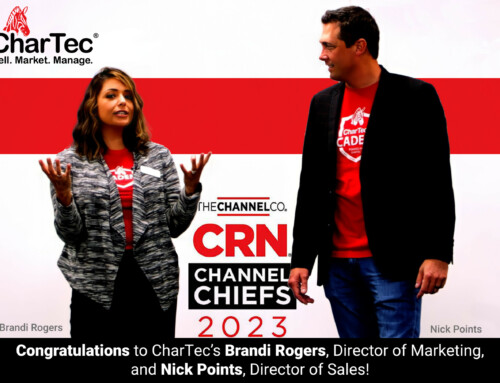Successful salespeople usually have confidence when talking one on one. But when it comes to public speaking, even the most self-assured sales professional may panic. When you walk into a room to make a presentation and see prospects sitting around the table, it’s normal to be a bit nervous. It takes practice and a few guided techniques to overcome this fear. We know a few confident public speakers, and we’ve asked CoreTech CEO Josh Gossett to share some of his best tips for mastering public speaking with an emphasis on selling Managed Services.
Mastering the Three components of influence
Ethos
This section is your credibility and character. It entails convincing your audience you possess good character and are credible. In most cases, credibility builds before your presentation, but you can remind your audience at the beginning of your
speech.
When you have a high ethos, your audience will expect you to provide useful information. This advantage gets you in the door and is a necessary component, but at the same time, things like how long you have been in business and the qualifications of your techs are only small pieces of the puzzle.
Logos
Logos is your data, figures, and facts. Be factual and accurate when talking to potential MSP clients. Appeal to their logic by relying on their intelligence and offer evidence that supports your argument.
Ensure your points can be understood and make sense. Be specific when presenting facts and figures. Don’t use jargon and technical terms; be clear and direct. There will usually be at least one person in the room who loves numbers, so it’s important to touch upon them. But like ethos, it’s just another piece of the puzzle.
Pathos
A big piece of the puzzle is emotion. Words like “empathy” and “sympathy” derive from the term pathos. It means persuading people with emotional appeals.
A good salesperson will tap into their ability to influence prospects. Choosing emotional points and topics and using analogies and metaphors can go a long way. Storytelling can help you form emotional connections to people, and you can also use humor if that’s one of your strengths.
Own the stage
Whether you have a physical stage, a podium, or just a seat at the head of the conference table, you need to own it. Pay attention to your posture. How you look, dress, and carry yourself are some of the first things everyone will notice. Even the way you sit will convey an impression to the others in the room. Avoid shrinking into the background by hiding behind the podium or hunching over. A common term for this action is “getting small.” Standing straight can be challenging, but it’s worth mastering these skills. Also, good posture evokes confidence.
Before walking into a room, try to unload some nervous energy by getting outside of yourself, commonly referred to as “getting big.” Stretch, raise your arms or do whatever it takes to feel energized. Tony Robbins keeps a trampoline backstage to jump on before his talks because he performs best when his energy is high. When you walk into a room, the last thing you want is to look like you’ve just woken up from a nap.
Body language is important
Use body language and eye contact to build a sense of connection and trust with people. Josh recommends looking for the “champion” in the room. He points out that there’s usually a person in that presentation who is excited you are there and already believes you can help them. Find that person and go back to them over and over. But you also need to work the room and engage with everyone. Explain how the problems and solutions affect everyone there. Be deliberate about bringing everyone into the conversation and making eye contact with everyone. Powerful speakers make everyone in the room feel involved.
Don’t forget about gestures; use your hands to make gestures in the power zone between your belt buckle and your chin as appropriate. Adapt to the room, going more formal or casual as needed to match the audience.
Don’t rely on slides
Most presentations have at least a few slides, and they can impact your talk to support what you’re saying. However, do not make the mistake of reading the slides. Think of your PowerPoint as a visual aid, not a visual crutch. A successful sales presentation comes off like a pleasant conversation.
When you’re preparing for your presentation, tell your story without slides. Mastering this is very important. If you aren’t able to do this, it means you aren’t ready to tell the story. Ensure that your presence is a necessary component of the presentation. Your slides should support your message.
Paint a picture
When you’re talking, use descriptive words that paint a picture. Be vivid and colorful, and practice using visual imagery. Instead of saying “people can gain access to your data”, try something along the lines of “Everyone in your company – even those who no longer work here – can access everything on your network, including company emails, marketing strategies, and payroll information.” Use intentional language to inspire emotion.
Almost anyone can learn how to speak in public. Like many other endeavors, it’s simply a matter of incorporating advice from experts like Josh and practicing until you feel more comfortable.
If you are in MSP Sales and are not a confident public speaker, you need to attend our Sales Training Lab. In the safety of our classroom environment, you’ll gain the confidence you need to succeed by giving presentations to your classmates and a panel of judges. To become a pro at presenting, you need practice, and it’s better to do it here at CharTec than in front of that new prospect.
We’ve helped hundreds of MSP Salespeople become successful Sales Superstars, and we can help you too! Contact us or email membership@chartec.net.






Leave A Comment